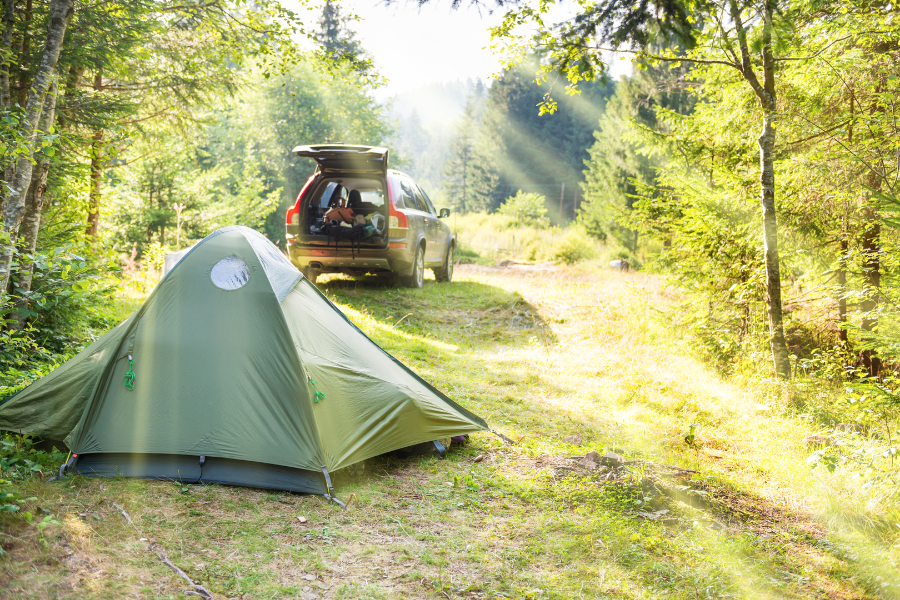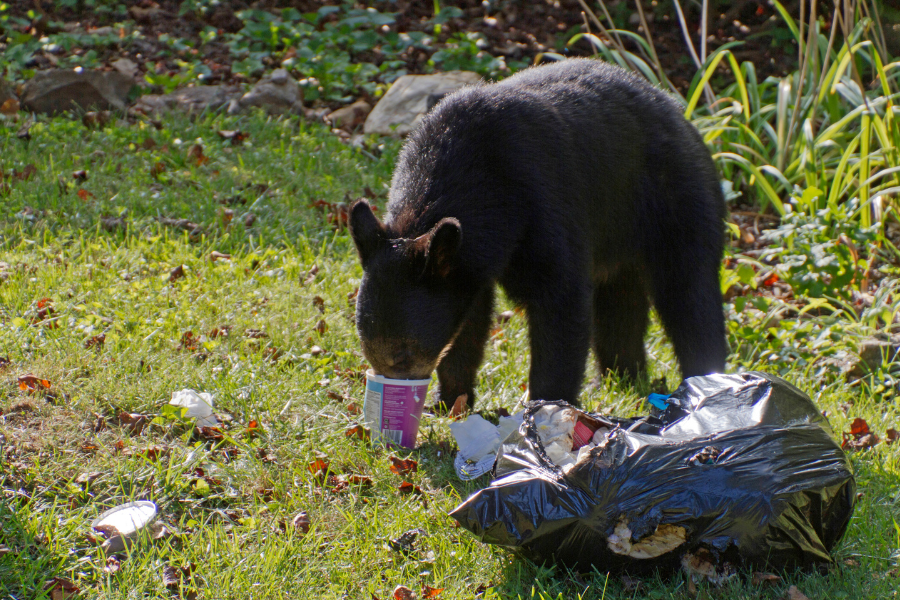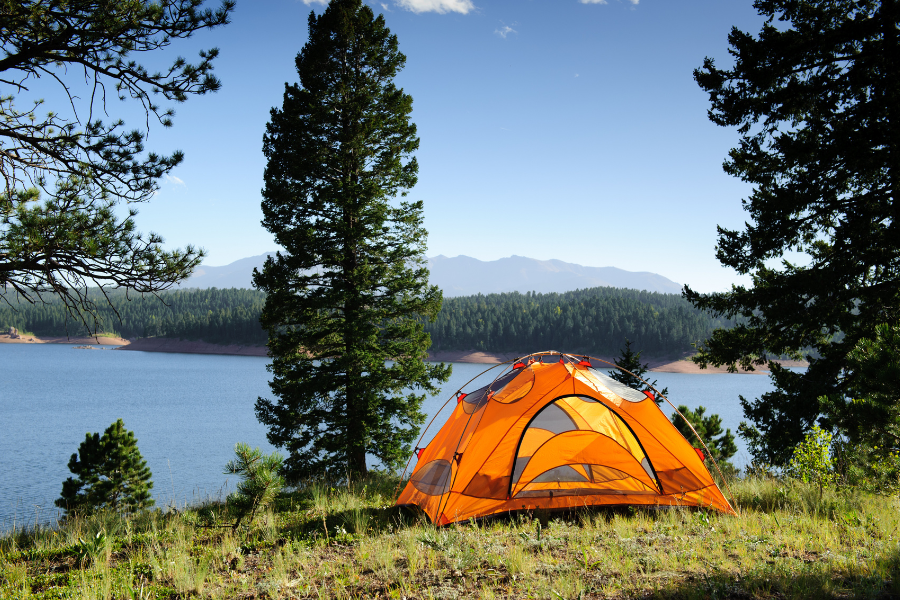How to Camp ‘Off-Grid’: A Comprehensive Guide
Introduction
Hello there, fellow adventurer! Ever dreamt of escaping the everyday routine to immerse yourself in the tranquility of nature? If the answer is yes, you’ve come to the right place. In this comprehensive guide, we’ll be delving into the ins and outs of “how to camp in the wilderness”. Camping ‘off grid’ is an exhilarating experience that can be both rewarding and challenging. However, with the right knowledge and preparation, you can ensure a successful camping adventure.
So, buckle up, grab your spirit of adventure, and let’s step into the wild unknown together, shall we?
How I Started Camping ‘Off-Grid’
Living in Alaska, camping ‘off-grid’ was just a way of life. There’s so much wide open space with very few people that this was just normal as a kid. However, when I left Alaska for University in Seattle and the ‘Lower 48’, I quickly realized society comes with a lot more rules!
So when I headed out for my first ‘car camping’ experience in the ‘Lower 48’ it was a shock to find out how quickly campgrounds filled up and I felt that I didn’t have the freedom to just pitch a tent anywhere. But I did anyway! This was before the internet as it is today and so there was no official name for what is now known as ‘dispersed camping’ and I had no idea if what I was doing was accepted. While it was a little trickier to find spots to camp off-grid, driving down random trails and roads, it was totally worth it and we found some amazing secluded places to explore the beautiful PNW (Pacific Northwest) all the way through Northern California.
So come on a journey with me to take a closer look at ‘dispersed camping’ or ‘boondocking’ to give you some tips and tricks should you decide to head out and find your own special patch of wilderness.
How to Camp ‘Off-Grid’: Dispersed Camping and Boondocking

There’s camping, and then there’s *wilderness camping* or camping ‘off grid’. If you’re looking to really dip your toes in nature, you’re probably interested in the practice of dispersed camping or boondocking. It’s about the pursuit of pure solitude, getting away from crowded campgrounds, and immersing oneself completely in the beauty and tranquility of nature. So, how exactly do you camp in the wilderness following these principles?
‘Off grid’ camping is now known as dispersed camping, often called boondocking, and refers to camping outside of designated campgrounds, generally in national forests and grasslands. It’s about using your wit, survival skills, and love for the outdoors to camp responsibly and safely without the convenience of campground amenities. The sense of freedom and peace you gain from this is unparalleled, but it’s not without its challenges.
This form of camping requires detailed planning, including thorough research on regulations in your intended camping area, packing in (and out) all necessities, practicing leave no trace principles to a higher degree, and having a strong understanding of how to ensure your own safety and wellbeing in more remote environments.
So next time you’re planning on how to camp in the wilderness, consider dispersed camping. It might just provide the escape you’re looking for, with solitude that traditional campgrounds often can’t offer.
The Role of Reliable Vehicles in Off-Grid Camping
When planning your wilderness camping trip, the choice of vehicle can play a crucial role in how deep into the wilderness you can venture. It’s not merely about the journey; it’s also about accessing more remote, tranquil locations that are off the beaten path. Reliable SUVs and trucks, with their off-road capabilities, become essential tools for reaching these secluded camping spots.
In this realm, vehicles like Subaru’s Forester and Outback, Toyota’s 4Runner and Tacoma, and Ford’s F-150 and Bronco have shown their mettle. These SUVs and trucks offer a combination of high ground clearance, powerful engines, and advanced 4×4 or all-wheel-drive systems, making them well-suited for rugged terrains.
For instance, Subaru’s models, with their impressive all-wheel-drive systems, offer good traction on slippery surfaces, which can be a great advantage when venturing into the wilderness. Meanwhile, vehicles like the Toyota 4Runner or the Ford F-150 provide remarkable off-road capabilities with their strong suspensions and sturdy build, enabling you to conquer challenging paths that lead to more secluded camping spots.
Moreover, these vehicles come with ample cargo space, meaning you can carry all your essential camping gear without compromising on comfort. Safety features, such as advanced driver-assist systems, add another layer of security when you’re navigating uncertain terrains.
However, remember that while having a capable vehicle can expand your camping horizons, it doesn’t replace the need for careful planning, adherence to local regulations, and respect for the environment. So whether you choose a Subaru, a Toyota, or a Ford for your adventure, ensure you pair it with responsible camping practices.
Choosing the Right Gear: Maximizing Your SUV or Truck

When preparing for your wilderness adventure, it’s crucial to have the right gear. But beyond the essentials, like a high-quality sleeping bag and first-aid kit, you might wonder how you can optimize your SUV or truck for a comfortable and efficient camping experience. Well, here’s where some ingenious solutions come into play.
One brilliant way to expand your camping capabilities is by using a rooftop tent. Unlike traditional ground tents, rooftop tents are mounted on your vehicle’s roof rack system. These tents not only provide the comfort of a regular tent but also keep you elevated from the ground, which can be beneficial in areas with unpredictable weather or wildlife. Not to mention, they save you the trouble of finding a perfectly flat spot to pitch your tent.
But what about when you want to relax outside the tent without being under the sun or exposed to the elements? That’s where attachable awnings come into play. They can be easily affixed to your SUV or truck, providing much-needed shade and shelter. Whether you’re escaping the sun, taking cover from a drizzle, or just wanting a cozy space to enjoy the wilderness, awnings are your best friend.
Another great addition to your camping gear can be attachable tables. These are designed to hook onto the side of your vehicle, providing a stable platform for cooking, dining, or anything else that requires a flat surface. Along with this, portable camp kitchens and sliding cargo boxes can transform your vehicle into a fully-equipped wilderness basecamp.
Finally, the beauty of these gear additions is that they utilize space that would have otherwise gone unused without compromising on the rest of your vehicle’s storage capacity. By combining a practical gear choice with the capabilities of your SUV or truck, you can take your dispersed camping or boondocking experience to new heights.
Remember, your gear can make or break your camping experience. So, whether you’re packing a rooftop tent or an attachable table, choose wisely, and prepare for the adventure of a lifetime!
Selecting a Suitable Campsite
Finding the perfect campsite is like searching for a new home. The land might be vast, but your choice must be wise. The location should be safe, relatively flat, and free from hazards such as falling rocks or flooding. Make sure the site is a good distance from bodies of water and trails, yet near enough to a water source for cooking and cleaning. Additionally, always follow established guidelines and regulations regarding where you can set up camp.
Consider factors like wind direction (you don’t want smoke from your fire blowing into your tent), proximity to firewood, and sunrise or sunset views. Take your time to find the perfect spot; after all, this will be your home in the wilderness.
Bringing the Right Gear: Essential Tools for Off-Grid Camping
In the wilderness, your camping gear isn’t just about comfort, it’s also about survival. Packing the right tools can make a significant difference in your ability to handle unexpected situations. Tools like a mini axe, hunting knives, and others, while not necessary for typical camping scenarios, can become invaluable when you’re far off the beaten path.
A mini axe, for instance, is a versatile tool that can aid in various camping tasks. It’s perfect for chopping small branches for firewood or hammering tent stakes into tough ground. When choosing a camping axe, look for one that is compact, lightweight, and made of durable materials to withstand rugged use.
Hunting knives are another essential tool for wilderness camping. They can help in food preparation, cutting cordage, making fire-starting shavings, and even in emergency first aid situations. A good hunting knife should have a sharp, sturdy blade and a comfortable, non-slip handle. A sheath for safe carrying is also necessary.
Other important tools for wilderness camping include a high-quality multi-tool (equipped with things like pliers, screwdrivers, a can opener, etc.), a reliable fire starter (matches, lighter, or ferro rod), and a compact but powerful flashlight or headlamp with extra batteries.
An often-overlooked tool is a good, sturdy camping shovel. This can assist in digging holes for fire pits (only where it is legal), putting out fires, and even in building shelter if necessary.
And don’t forget a detailed map and compass for navigation – not all wilderness areas will have cell service for GPS. Knowing how to use these tools is just as important as having them, so consider taking a basic orienteering course or learning from experienced wilderness explorers.
Remember, the wilderness is unpredictable, and while we hope for the best, it’s wise to prepare for the unexpected. Equip yourself with these essential tools, learn how to use them, and you’ll be ready to handle whatever your wilderness camping adventure throws at you.
Planning Meals for Your Camping Adventure
In the wilderness, there’s no corner store or delivery service. So, how do you ensure you have satisfying, nutritious meals? It’s all in the planning!
Start by planning your meals and snacks for each day of your trip. Remember, you’ll be burning more calories than usual, so pack more food than you think you’ll need. A camping stove is essential for wilderness camping; it’s lightweight, easy to use, and a safer option than open fires. Plus you can add all kinds of Cooking Accessories to make camping meals more enticing and satisfying.
Never leave your campsite on hiking excursions without taking lightweight, non-perishable food items like instant meals, trail mix, dried fruits, and a water filter in case of emergencies.
Food Storage: Keeping Wildlife at Bay
When you’re camping in the wilderness, your food isn’t just tempting to you; it can also attract wildlife. Everything from small rodents to larger predators might be lured into your campsite by the smell of your food. Proper food storage is critical not just for your safety, but also for the well-being of wildlife. You do not want to find this little rascal in your camp – no matter how cute he looks!

Start by storing your food in airtight, odor-proof containers. These reduce the smell of your food, making it less likely to attract animals. Remember to wipe the containers clean to remove any food residue on the outside.
Never leave your food, trash, or any scented items unattended. If you’re going out for a hike, pack everything up and store it securely. Similarly, make sure you clean up your cooking area after each meal.
In bear country, the use of bear canisters is a must. These are sturdy, sealable containers designed to keep bears and other wildlife out. Store the canister at least 100 yards away from your camping area. Alternatively, you can use the “bear hang” method, suspending your food, trash, and toiletries at least 10 feet off the ground and 4 feet away from the tree trunk.
For smaller creatures, like raccoons and squirrels, your vehicle can serve as an effective storage unit. However, make sure all windows are closed and doors are locked.
Remember, feeding wildlife is not just dangerous for you, but it’s also harmful to the animals. It can make them dependent on human food and draw them closer to human activity, leading to conflicts. The rule is simple: while you’re out there enjoying the wilderness, do everything you can to keep your food to yourself and leave the wildlife to their natural diet.
Understanding Off-Grid Camping Safety
As thrilling as wilderness camping may be, safety should always come first. Familiarize yourself with basic first aid procedures, carry a fully-stocked first aid kit, and learn how to use every item within it. It’s also important to know the signs of hypothermia, heat exhaustion, and dehydration, common threats in the wilderness.
Wildlife encounters can be awe-inspiring but also dangerous if not handled properly. Learn about the local wildlife, how to avoid attracting them to your campsite, and what to do if an encounter occurs.
Lastly, never venture into the wilderness without letting someone know your itinerary and expected return time. This can be critical if a rescue effort becomes necessary.
Leaving No Trace Behind
When we venture into the wilderness, we’re guests in nature’s home. As responsible visitors, we need to respect this space and leave it as we found it. This is the essence of the “Leave No Trace” principle.
Pack out all your trash, do not disturb wildlife or their habitats, and avoid damaging live trees or plants. Respect other visitors and protect the quality of their experience. Be considerate when camping and hiking; keep noise levels down and give other campers space.
Remember, the goal is to leave the wilderness as if no one has been there. Let’s preserve our beautiful outdoor spaces for generations to come!
Final Thoughts

Camping in the wilderness isn’t just an adventure; it’s a journey into self-discovery. It’s about immersing yourself in an environment where your senses come alive and your connection to nature deepens. As we’ve seen, successful wilderness camping involves careful planning, respect for nature, and adherence to safety guidelines.
But remember, the wilderness isn’t going anywhere. Take your time, learn at your own pace, and most importantly, enjoy the process! Next time someone asks you “how to camp off-grid?”, you’ll have plenty of wisdom to share.
Happy camping!




